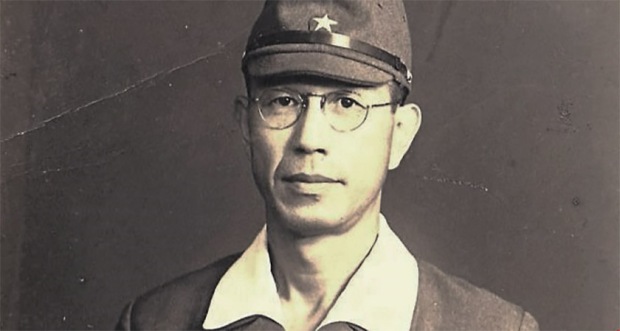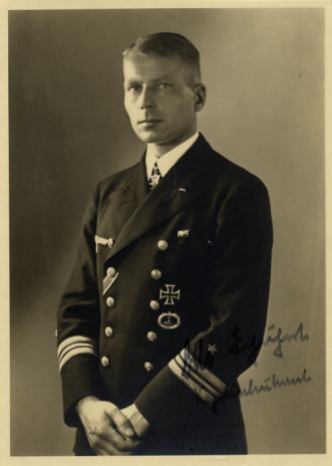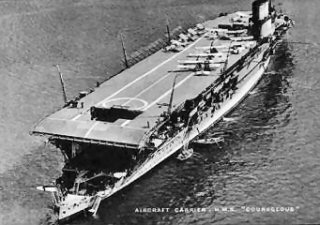
Marie Elisabeth Jean Elmes (5 May 1908 – 9 March 2002)was an Irish businesswoman and aid worker who is credited with saving the lives of at least 200 Jewish children during the Holocaust by hiding them in the boot of her car.In 2015, she became the first and so far the only Irish citizen honoured as Righteous Among the Nations by the State of Israel which was in recognition of her work in the Spanish Civil War and World War II.
Born in 1908 at Winthrop Street in Cork, where her parents had a pharmacy, Mary Elmes studied French and Spanish at Trinity College Dublin

and at the London School of Economics, before going to Spain in the 1930s during the civil war there, where she worked in children’s hospitals.
During the Holocaust, she helped save the lives of Jewish children at the Rivesaltes in the Pyrénées, which became a holding centre for Jews destined for concentration camps.In January 1943, she was arrested on suspicion of helping Jews escape and spent six months in a jail near Paris.
On her release, she returned to helping Jewish people escape the Holocaust.
It would take Prof Ronald Friend almost 70 years to identify the person who saved his life. Then, one morning in January 2011, an email popped into his inbox with a name. The woman who had extricated him from a detention camp during the Second World War was called “Miss Elms”.
He would later discover that her name was, in fact, Mary Elmes. Other details would follow. She was born in Cork City in 1908 and she had helped to save hundreds of Jewish children from the Nazi gas chamber.
(A 1943 school photo of Ronald Friend (middle row, 3rd from left) who was mixed in with local children at a school in the South of France. Mary Elmes extricated Ronald and his brother from the detention camp in 1942)

He and his brother, then aged 18 months and five years old respectively, were two of those children. Although Prof Friend had spent years piecing together the details of his early childhood, this final piece of the jigsaw had always eluded him.
He had the end of the story, but not the beginning.
He had known, for instance, of his family’s near-escape over the Swiss border in 1942. His father Hans and brother Mario had made it to safety over the border. They turned back, however, when they saw that police had stopped young Ronald and his mother, Eva. They would all be detained at Rivesaltes, a notorious holding camp near Perpignan in the south of France.
He had evidence, too, that he had been spirited away to a safe house in Toulouse. He even met the French priest, Fr Louis Bézard, who had hidden him and his brother in a suitcase as they passed through Toulouse train station under intense Gestapo surveillance.
On 25 September 1942, Mary Elmes wrote to say that they were going to be liberated the next day and taken to a Quaker hostel, or “colony”, in Vernet-le-Bains, called the Hotel du Portugal.

The hotel is still there.” He and his brother were finally reunited with their mother Eva in 1947 but they found out their father Hans had been deported to Majdanek camp in 1943. He perished there.
On completing her studies Mary joined the University of London Ambulance Unit in Spain to help the innocent victims of the vicious ongoing Spanish Civil War. She was posted to Almeria in southern Spain to a children’s hospital that soon came under the administration of a Quaker humanitarian organisation the Friends Service Council. Almeria was bombarded by the German Navy in support of Franco’s fascists and Mary was moved further north to Alicante. Her organisational skills were obviously already evident as in Alicante she was put in charge of the hospital.

Things were no easier in Alicante as the fighting raged on and the town sustained one of the worst aerial attacks of the war in May 1938, this time at the hands of the Italian airforce when more than 300 civilians were killed. Despite the desperate circumstances Mary was committed to her work realising that though she may be able to leave, the children she was helping had no choice but to remain. Her commitment was such that even when her father died back in Cork she refused to return home as no replacement for her could be found. It was at this time that Mary began taking children from the war-torn city up into the mountains to offer some refuge from the fighting and the daily horrors they witnessed.
The Civil War came to an end in April 1939 and a mass exodus of half a million refugees began fleeing to France in order to escape the new nationalist regime. Mary and many of her colleagues went with them making the tortuous journey across the Pyrenees mountains between Spain and France. In France they may have escaped the fighting and reprisals but conditions were terrible. The French government had set up holding camps for the new arrivals close to the coast where they were hemmed in by barbed-wire. There was little shelter, no toilet facilities and food and provisions were simply thrown over the fence.
Realising that most of the refugees would not return to Spain as they had hoped the French government finally put in place more organised camps and by the end of May conditions began to improve. Mary set to work caring for the many children who had made the journey and spent much of her time trying to provide reading materials and some kind of education for children and adults in the camps.
At the same time Hitler’s Germany was making preparations for war and in September the Second World War began when the Wehrmacht invaded Poland.

Many Germans who had fled to France from the Nazis were rounded up as illegal aliens and sent to the camps in the south and things went from bad to worse as the Nazis quickly overran France itself with thousands more heading for the camps. Mary Elmes was based at Camp de Rivesaltes near Perpignan 40km from the Spanish border. As the war progressed and more and more people were detained it would become one of the largest detention centres in France and conditions quickly deteriorated. Her main concern turned from providing books and education to simply keeping as many people alive as she could.
As an Irish citizen Mary was able to remain working at the camp when many of her British and American colleagues were forced to leave as their countries entered the war. As the war progressed the Vichy government began sending thousands of Jews to Rivesaltes to join the already overcrowded Spanish and others who were detained there.

Its location on a barren plain near Perpignan left it open to the elements, unbearably hot in summer and freezing cold during the winter and many of those detained had only rags for clothes; malnutrition and disease became a serious problem.
It was at this time that Jewish prisoners began being sent to the Drancy camp near Paris

and then on to Auschwitz where most of them would be murdered. Mary and her colleagues soon realised what was happening after receiving reports from elsewhere and they set about saving as many people as they could. Under the Vichy regime the government was prepared to allow children to be taken from the camp to stay in children’s ‘colonies’ elsewhere but their parents could not go with them. Mary went around the camp asking parents to let the children go in the hope of saving them from an even worse fate.
When the Nazis took full control in 1942 they also put a stop to children being removed from the camp and those who had already escaped began to be moved to safer locations high in the Pyrenees where they would not be found by the authorities. Mary also began taking children from the camp directly herself and smuggling them across the Spanish border in the boot of her car with the help of Dr Joseph Weill and Andrée Salomon two members of the Jewish Children’s Aid Society (OSE).
Mary Elmes was arrested in February 1943 and imprisoned in Toulouse and later Fresnes Prison near Paris but was released six months later. She continued her humanitarian work until the end of the war despite the huge personal risk to her own safety. It is estimated that she helped save the lives of more than 200 Jewish children during the war. When the war came to an end she married a Frenchman and settled in the south of France where she raised two children.
She wass awarded the Legion of Honour, France’s highest civil accolade for her efforts during the war but refused to accept it not wanting any attention for what she did. She often returned to Cork and Ireland to visit throughout her life and died in France in 2002 at the age of 94. On January 23rd, 2013 Yad Vashem recognized Mary Elisabeth Elmes as Righteous Among the Nations.

I am passionate about my site and I know you all like reading my blogs. I have been doing this at no cost and will continue to do so. All I ask is for a voluntary donation of $2, however if you are not in a position to do so I can fully understand, maybe next time then. Thank you.
To donate click on the credit/debit card icon of the card you will use. If you want to donate more then $2 just add a higher number in the box left from the PayPal link. Many thanks.



































You must be logged in to post a comment.